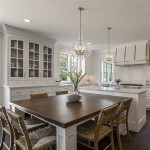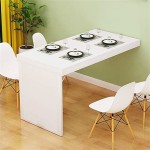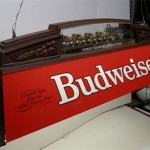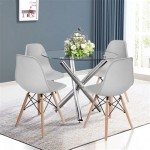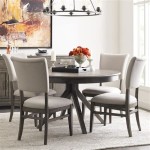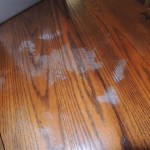Dining Table Leaves: Seating Up to 12 Guests
A dining table serves as a central gathering point within a home, facilitating shared meals, conversations, and celebrations. For households that frequently entertain larger groups, a dining table equipped with leaves, capable of seating up to 12 individuals, becomes a practical and versatile furniture investment. These tables offer the flexibility to adapt to both everyday family meals and larger social gatherings, optimizing space utilization and accommodating varying seating requirements.
The concept of incorporating leaves into dining table design dates back several centuries, reflecting a long-standing need for adaptable furniture solutions. Initially crafted using simple mechanical mechanisms, these tables have evolved significantly with advancements in engineering and manufacturing. Modern dining tables with leaves employ a variety of extension mechanisms, materials, and aesthetic styles to meet diverse consumer preferences and spatial constraints.
Selecting a dining table with leaves that seats 12 requires careful consideration of several factors, ensuring it aligns with the homeowner's lifestyle, available space, and aesthetic sensibilities. These factors include the table's construction quality, the type of leaf mechanism employed, the material composition, and the overall design compatibility with the existing interior décor.
Understanding Dining Table Leaf Mechanisms
The mechanism by which a dining table extends to accommodate leaves significantly impacts its ease of use, stability, and long-term durability. Several common leaf mechanisms are employed in tables designed to seat 12, each offering distinct advantages and disadvantages. Understanding these differences is crucial for making an informed purchase decision.
One prevalent mechanism is the butterfly leaf. In this design, the leaf or leaves are hinged and stored beneath the tabletop. When extension is required, the table is separated in the middle, and the butterfly leaf unfolds to fill the gap. This type of mechanism is relatively simple to operate and requires minimal storage space, as the leaves are integrated into the table's structure. However, butterfly leaves may sometimes present a less seamless aesthetic compared to other designs, particularly if the grain pattern or finish does not perfectly align with the tabletop.
Another popular option is the drop-in leaf. These leaves are separate pieces that are inserted into the table when extended. Typically, the table splits in the center, and the leaves are placed into the resulting gap. Drop-in leaves provide a clean and consistent tabletop surface when in use, offering a more visually cohesive appearance compared to butterfly leaves. However, this mechanism requires separate storage space for the leaves when they are not in use, which can be a significant consideration, especially in smaller homes.
Self-storing leaves represent a hybrid approach, offering the convenience of integrated storage without the visual compromises of butterfly leaves. In this design, the leaves are often stored within a cavity beneath the tabletop, accessible through a specialized mechanism. The table is separated, and the leaf is lifted and locked into place. This approach offers a balance between ease of use and aesthetic appeal, eliminating the need for separate storage while maintaining a smooth and consistent tabletop surface. However, self-storing mechanisms can be more complex and potentially more prone to mechanical issues compared to simpler designs.
Gear slides, also known as geared extension systems, provide a smooth and synchronized extension process. These mechanisms utilize a geared track system to ensure both halves of the table separate evenly and consistently, creating a uniform gap for leaf insertion. Gear slides offer improved stability and ease of use, particularly in larger tables designed to seat 12 or more. While generally more reliable, gear slide mechanisms can be more expensive to manufacture and repair compared to simpler alternatives.
The ideal leaf mechanism depends on individual preferences, spatial constraints, and budgetary considerations. Assessing the trade-offs between ease of use, storage requirements, aesthetic appeal, and long-term durability is essential for selecting the most appropriate mechanism for a given dining space.
Material Considerations for Durability and Aesthetics
The materials used in constructing a dining table directly impact its durability, aesthetic appeal, and overall value. Tables designed to seat 12, particularly those with extension mechanisms, require robust materials capable of withstanding significant weight and frequent use. Common materials include hardwoods, engineered woods, metal, and glass, each offering distinct characteristics.
Hardwoods such as oak, maple, walnut, and cherry are prized for their strength, durability, and natural beauty. These woods offer excellent resistance to scratches, dents, and warping, making them well-suited for high-traffic dining environments. Hardwood tables often feature intricate grain patterns and rich color variations, adding warmth and character to a dining room. However, hardwoods tend to be more expensive than other materials, reflecting their superior quality and longevity.
Engineered woods, such as plywood and MDF (Medium-Density Fiberboard), provide a more cost-effective alternative to solid hardwoods. These materials consist of layers of wood veneers or wood fibers bonded together with adhesives. Engineered woods offer good stability and resistance to warping, and they can be finished to mimic the appearance of solid hardwoods. However, engineered woods are generally less durable than solid hardwoods and may be more susceptible to damage from moisture or impact.
Metal frames, typically made of steel or aluminum, are often incorporated into dining tables, particularly modern and contemporary designs. Metal provides exceptional strength and stability, ensuring the table can support a significant weight load. Metal frames can be powder-coated or finished in a variety of colors and textures, offering design versatility. However, metal can feel cold and industrial, and it may require additional finishing to prevent rust or corrosion.
Glass tabletops offer a sleek and modern aesthetic, creating a sense of openness and airiness in a dining space. Glass is inherently durable and resistant to scratches and stains, making it easy to clean and maintain. However, glass can be prone to shattering under excessive impact, and it can be more expensive than other tabletop materials. Furthermore, glass tabletops can show fingerprints and smudges more readily, requiring frequent cleaning.
The choice of materials should reflect the homeowner's aesthetic preferences, budgetary constraints, and desired level of durability. Combining different materials, such as a hardwood tabletop with a metal frame, can create a visually interesting and functionally superior dining table.
Space Planning and Ergonomic Considerations
When selecting a dining table with leaves that seats 12, meticulous space planning is essential to ensure comfortable seating and ease of movement around the table. Insufficient clearance can lead to cramped conditions and impede traffic flow within the dining area. Before purchasing a table, carefully measure the available space and consider the table's dimensions both in its collapsed and fully extended configurations.
A general guideline is to allow at least 36 inches of clearance between the edge of the table and any surrounding walls or furniture. This provides sufficient space for individuals to comfortably push back their chairs and walk around the table without obstruction. In tighter spaces, 30 inches of clearance may be acceptable, but it can result in a more restrictive environment. For optimal comfort, consider 42 to 48 inches of clearance, particularly in formal dining rooms or areas with heavy foot traffic.
Ergonomic considerations also play a crucial role in creating a comfortable dining experience. The standard dining table height is typically between 28 and 30 inches, providing ample legroom for most individuals. The chairs should be selected to complement the table height, with a seat height of approximately 18 inches. This allows for a comfortable posture and prevents strain on the back and legs.
The shape of the table can also impact seating capacity and spatial efficiency. Rectangular tables are the most common shape for seating larger groups, as they maximize seating along the sides. However, rectangular tables can occupy a significant amount of floor space, particularly when extended. Oval tables offer a softer aesthetic and can provide more comfortable seating for individuals at the ends of the table, as there are no sharp corners. Round tables promote conversation and create a more intimate dining experience, but they may not be as efficient in seating large groups. Square tables offer a contemporary aesthetic and can be suitable for smaller dining areas.
Furthermore, consider the placement of the table within the dining room. Position the table away from doorways or high-traffic areas to minimize disruption during meals. Ensure adequate lighting above the table to create a welcoming and visually appealing atmosphere. The lighting should be bright enough to illuminate the food and conversation, but not so harsh as to create glare or discomfort.
By carefully considering space planning and ergonomic principles, homeowners can select a dining table with leaves that not only accommodates their seating needs but also enhances the overall comfort and functionality of their dining space.

Modern Style Extendable Wooden Table Seats 10 To 12

7 Piece Wooden Dining Table Set Mutifunctional Extendable With 12 Leaf And 2 Drawers 6 Chairs Soft Cushion Natural Wood Wash Walmart Com

Dining Table Leaves Seats 2025 12

Modern Style Extendable Wooden Table Seats 10 To 12

Polibi 54 00 In Rectangle Farmhouse Wood Top Extendable Pedestal Dining Table With A 12 Leaf Natural Wash Seats For 6 Rs 60rfwtdti E The Home

Dining Table Leaves Seats Cheap 12

7 Pieces 48 60 Extendable Dining Table Set With 12 Leaf For 6 Upholstered Chairs Mid Century Wood Kitchen And

A History Of Table Leaves Part Ii America Wood Furniture

7 Piece Wooden Dining Table Set Mutifunctional Extendable With 12 Leaf And 2 Drawers 6 Chairs Soft Cushion Brown White Shein Usa

Dining Table Clearance Leaves Seats 12

